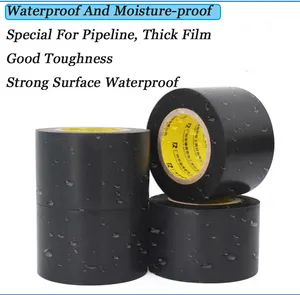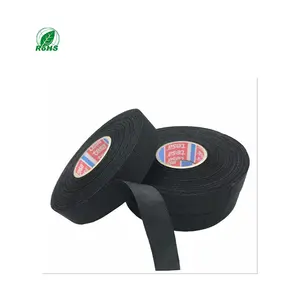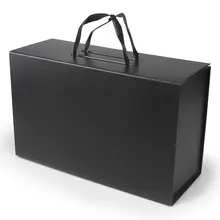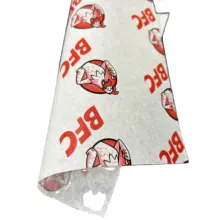The quintessential black masking tape is a multifunctional and essential asset across numerous sectors, celebrated for its pressure-sensitive adhesive and user-friendliness. This tape is engineered to bond securely to various materials and can be detached without leaving any sticky remnants. Black masking tape is frequently employed for tasks such as labeling, painting, and sealing, available in an array of widths and compositions to meet distinct requirements.
Types and Characteristics
Delving into the assortment of black masking tape, one discovers a spectrum of products tailored to meet precise needs. The painters tape black variant is lauded for its ability to produce crisp lines and minimal adhesive residue, earning the favor of professional painters for its straightforward removal and precise edge definition. In terms of resilience and tenacity, gorilla masking tape is distinguished by its formidable adhesive properties, suitable for coarse textures and more demanding environments. The thin black masking tape is perfect for artists and designers seeking exactitude, whereas the wide black masking tape is the solution for broader applications, offering extensive coverage and robust bonding. Specialty options like 2 black paper tape and 1 black masking tape serve specialized markets with their unique dimensions for specific uses. This variety ensures the availability of a black masking tape for nearly any situation.
Structure and Operation
The architecture of black masking tape is a testament to simplicity and efficacy. At its foundation, the tape comprises a paper backing, such as crepe or kraft paper, coated with a pressure-sensitive adhesive. This adhesive is concocted to ensure a steadfast yet easily breakable bond that leaves no residue. Some variants include additional layers, like a primer for better adhesion or a release coat to avert self-sticking. With double-sided black paper masking tape, adhesive is applied to both faces, separated by a liner that is peeled away during use. These elements synergize to strike a balance between durability, pliability, and convenience.
Materials and Properties
The choice of materials for black masking tape is pivotal to its functionality. Crepe paper is preferred for its malleability, enabling the tape to mold to uneven shapes and surfaces, which is particularly advantageous for painting and decorating. Kraft paper offers a more robust base, lending extra strength for heavy-duty tasks. Foam tapes, made from materials like PE or acrylic foam, are selected for their buffering qualities and are often utilized in scenarios requiring a secure seal, such as weatherproofing or noise reduction. The adhesives are meticulously developed to balance stickiness with removability and may comprise rubber-based or acrylic adhesives to meet specific requirements for thermal resistance and longevity.
Business Usages and Applications
Black masking tape is indispensable in a plethora of commercial environments. In the automotive sector, it is crucial for delineating areas during car body painting, ensuring sharp paint demarcations and safeguarding surfaces. Within the electronics field, its anti-static features are vital for shielding delicate components throughout production and assembly. The entertainment industry relies on black artist tape for inconspicuously securing cables and stage elements, preserving the setting's illusion. In each application, the tape not only fulfills its primary role but also bolsters operational efficiency and effectiveness, frequently saving time and diminishing the necessity for subsequent corrections or repairs.
Functions
The roles of black masking tape are varied and integral to its broad adoption. Primarily crafted for temporary attachment to surfaces, it can endure diverse temperatures and conditions, proving to be a dependable instrument in a multitude of sectors. Its hand-tearable nature facilitates swift deployment, while its compatibility with writing tools makes it an exemplary labeling medium. In packaging, it ensures boxes remain sealed during transport, and in painting, it averts color seepage, guaranteeing precise lines and surface protection.
Features
The attributes of black masking tape distinguish it from other adhesives. Its non-reflective surface is essential in film and photography, where reducing light reflection is imperative. The tape's resistance to heat qualifies it for tasks involving exposure to high temperatures, such as in circuit board production or automotive paint processes. Moreover, the tape's adaptability allows for application on contoured lines and angles, offering extensive versatility. These traits, coupled with the tape's robustness and longevity, forge a product with distinctive selling points that cater to a broad spectrum of professional requirements.
Benefits
Employing black masking tape yields numerous advantages. Its clean removal translates to reduced cleanup time and a lesser chance of surface impairment. This aspect is especially valuable in sectors where the end appearance is paramount, such as in decorative painting or vehicle pre-sale preparation. The tape's adaptability diminishes the need for an array of specialized products, streamlining inventory and storage demands. Moreover, the tape's dependability and user-friendliness enhance workflow productivity and can lead to a safer work environment by securing loose objects and minimizing tripping hazards.
How to Use and Choose
Effective utilization of black masking tape necessitates an appreciation of the task's specific requirements. For instance, when delineating areas for paint application, the tape must be affixed firmly to prevent paint infiltration, yet removed before the paint fully dries to ensure a neat edge. Selecting the appropriate tape involves factors such as the surface texture, environmental temperature, and the duration of tape application. A gorilla masking tape may be preferred for its exceptional strength and endurance, while a thin black masking tape would be ideal for detailed tasks where precision is crucial.
How to Clean and Maintain
Care and maintenance of black masking tape require proper storage and handling. To prevent adhesive deterioration, store the tape in a cool, dry location away from sunlight. If any residue remains after removal, it can typically be cleaned with a basic solvent like isopropyl alcohol, although pre-testing on a discreet area is advised to avoid damaging the surface.
How to Install
Applying black masking tape is a simple procedure. For optimal results, ensure the surface is clean and moisture-free. Measure and cut the tape to the needed length, position it on the surface, and press it down to remove air pockets. For double-sided tapes, the liner on the second side is detached when ready to stick to the other surface, securing a firm attachment.
Target Audience and Needs
The intended market for black masking tape encompasses professionals in fields such as automotive, construction, painting, electronics, and entertainment. Each sector has distinct requirements that the tape addresses, from the necessity of residue-free removal in decorative applications to the demand for electrical insulation in electronics. By grasping the preferences and needs of these target groups, manufacturers can customize their offerings to satisfy the stringent standards of each domain.
How does black masking tape compare to other colors?
In comparison to tapes of other hues, black masking tape provides a notable advantage in visibility and contrast, particularly on lighter surfaces. It is also less likely to display stains or marks, making it the preferred option in environments where cleanliness is key.
What are the considerations for choosing the right black masking tape?
Selecting the ideal black masking tape entails evaluating the surface it will adhere to, the ambient conditions, the length of time it will be in place, and the task's specific demands, such as thermal resistance or electrical insulation.
How to ensure the optimal performance of black masking tape?
To guarantee peak performance, it is essential to apply black masking tape to a surface that is both clean and dry, and to choose an adhesive that suits the environmental conditions. Proper storage, shielded from extreme temperatures and moisture, will also preserve the tape's efficacy.








































 浙公网安备 33010002000092号
浙公网安备 33010002000092号 浙B2-20120091-4
浙B2-20120091-4